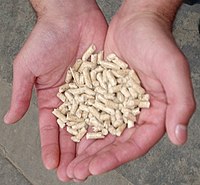
Photo from wikipedia
Abstract Dead wood, including dead standing trees (DST) and coarse woody debris (CWD), is a critical component of forest ecosystems that provides habitat and refugia for fauna, flora, and microbial… Click to show full abstract
Abstract Dead wood, including dead standing trees (DST) and coarse woody debris (CWD), is a critical component of forest ecosystems that provides habitat and refugia for fauna, flora, and microbial communities and plays a key role in carbon and nutrient cycling. However, few studies have modelled the long-term dynamics of dead wood, limiting our ability to predict how the abundance and composition of dead wood may change with climate change or altered fire regimes. Here we analyse DST and CWD data in 884 plots encompassing multiple field campaigns and forest types of varying canopy cover and species composition across the State of Victoria in temperate south-eastern Australia. We use boosted regression tree modelling to examine the relative influence of disturbance history and tree functional traits on dead wood biomass while accounting for the influence of environmental and climatic factors and stand attributes across a broad productivity gradient. We modelled absolute and relative dead wood biomass by size (‘small’ 100
Journal Title: Forest Ecology and Management
Year Published: 2021
Link to full text (if available)
Share on Social Media: Sign Up to like & get
recommendations!